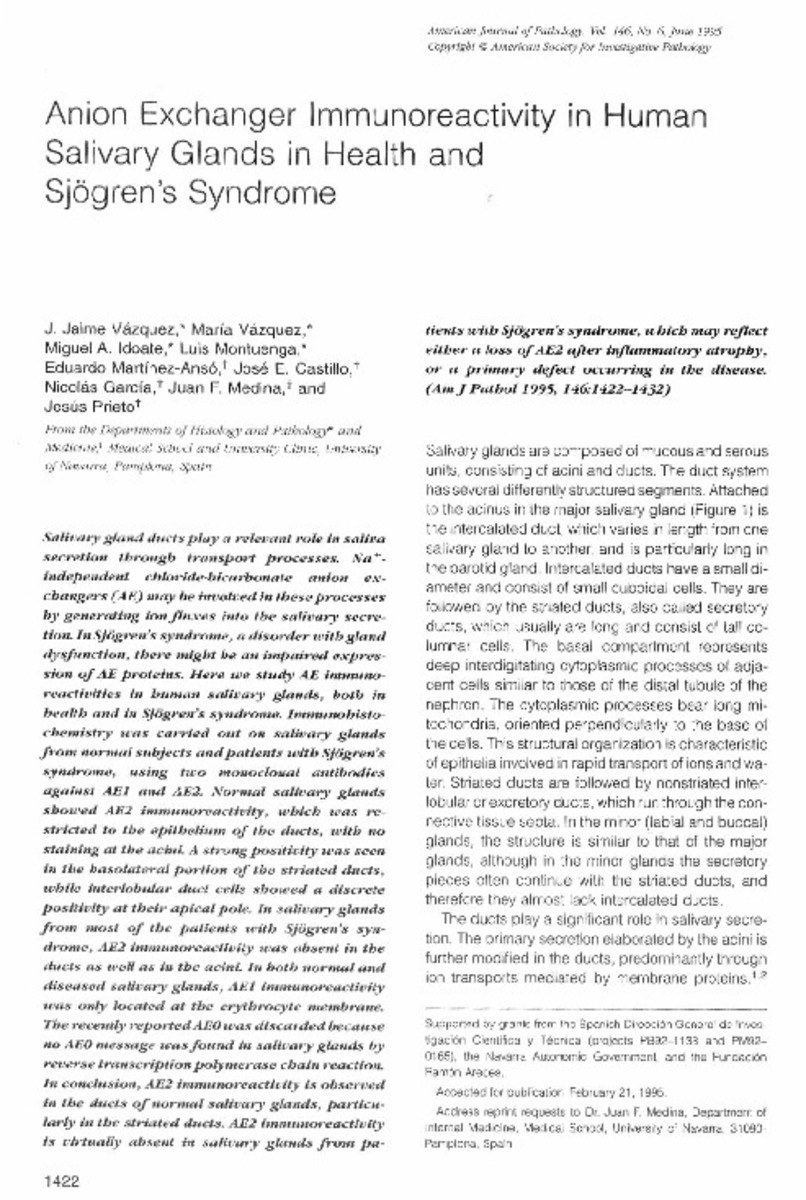Anion exchanger immunoreactivity in human salivary glands in health and Sjögren's syndrome
Palabras clave :
Antiporters/immunology
Salivary Glands/chemistry
Sjogren's Syndrome/metabolism
Fecha de publicación :
1995
Cita:
Vazquez JJ, Vazquez M, Idoate MA, Montuenga L, Martinez-Anso E, Castillo JE, et al. Anion exchanger immunoreactivity in human salivary glands in health and Sjogren's syndrome. Am J Pathol 1995 Jun;146(6):1422-1432.
Aparece en las colecciones:
Estadísticas e impacto
0 citas en

0 citas en

Los ítems de Dadun están protegidos por copyright, con todos los derechos reservados, a menos que se indique lo contrario.










